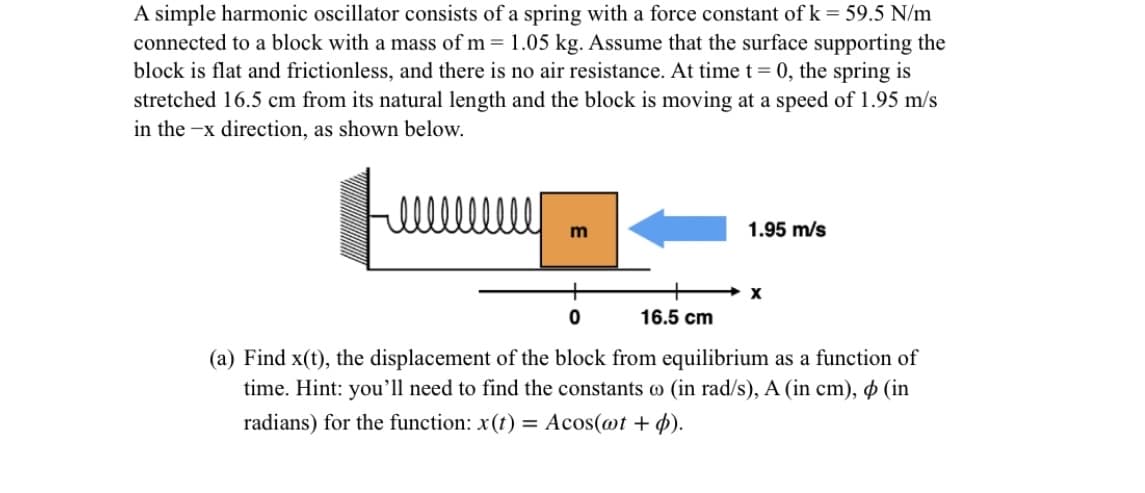(a) Find x(t), the displacement of the block from equilibrium as a function of time. Hint: you’ll need to find the constants o (in rad/s), A (in cm), ø (in radians) for the function: x(t) = Acos(@t + 4). %3D
(a) Find x(t), the displacement of the block from equilibrium as a function of time. Hint: you’ll need to find the constants o (in rad/s), A (in cm), ø (in radians) for the function: x(t) = Acos(@t + 4). %3D
Related questions
Question
(b) What is the velocity of the block (in m/s) at t = 2.00 s?
(c) What is the acceleration of the block (in m/s2) at t = 2.00 s?

Transcribed Image Text:A simple harmonic oscillator consists of a spring with a force constant of k = 59.5 N/m
connected to a block with a mass of m = 1.05 kg. Assume that the surface supporting the
block is flat and frictionless, and there is no air resistance. At time t = 0, the spring is
stretched 16.5 cm from its natural length and the block is moving at a speed of 1.95 m/s
in the -x direction, as shown below.
1.95 m/s
+
16.5 cm
(a) Find x(t), the displacement of the block from equilibrium as a function of
time. Hint: you’ll need to find the constants o (in rad/s), A (in cm), ø (in
radians) for the function: x(t) = Acos(@t + p).
Expert Solution
This question has been solved!
Explore an expertly crafted, step-by-step solution for a thorough understanding of key concepts.
This is a popular solution!
Trending now
This is a popular solution!
Step by step
Solved in 3 steps
